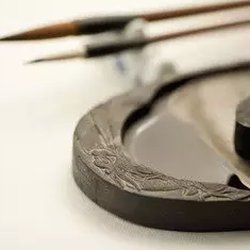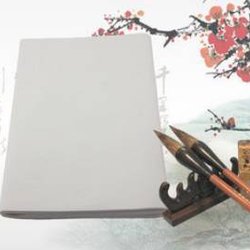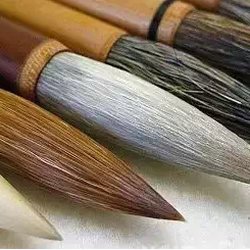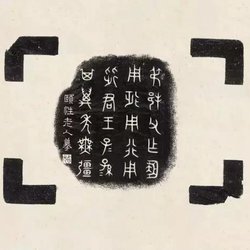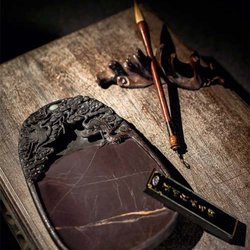Ink, according to legend, "Xing Yi began to make ink" during the reign of King Xuan of Zhou Dynasty. According to ancient research, Xing Yi should be regarded as a punishment. In other words, after the punishment in ancient times, Mo came. Ancient books record that there were five punishments during the Shun Dynasty, one of which was ink, which was to stab the prisoner on the forehead and paint it with ink, also called tattoo punishment. In this way, ink existed as early as the end of primitive society, with a history of about 4,000 years. Many ink writings were also found on the backs of oracle bones from the Shang Dynasty. Ink pills from Qin and Han Dynasties were also unearthed.
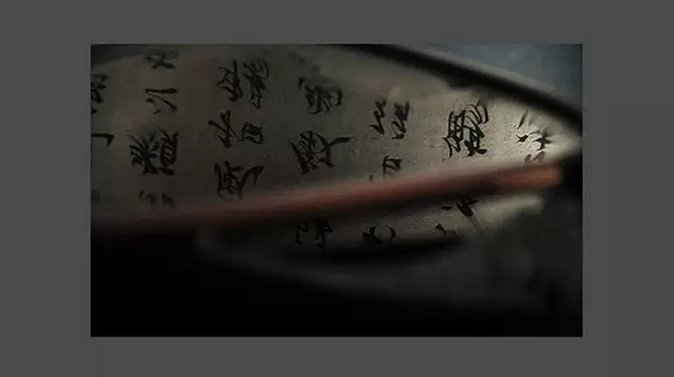
The use of ink in ancient times was very sophisticated. In the Han Dynasty, Mi (now Qianyang, Shaanxi Province) was famous for making ink, so Mi became the name of ancient ink. "Bi Chen Tu" written by Mrs. Wei, a female calligrapher in the Jin Dynasty, said: "The ink was made from pine smoke from Mount Lu and deer antler glue from the county. It has been more than 10 years old and is as strong as stone." "The Essential Art of Qi Min" by Jia Sixie of the Northern Wei Dynasty "Records: When making ink, not only did the ink smoke and glue be used, but also pearls, musk and other drugs were added to enhance the luster and color of the ink, remove odor and make it aromatic. At the end of the Tang Dynasty, father and son Xi Chao and Xi Tinggui, who were famous for their ink making, appeared.
The Xi family later moved south to Shexian County, Anhui Province. Xi Tinggui was appointed as a royal official by Li Yu, the later lord of the Southern Tang Dynasty, and was given the surname Li, so he was also called Li Tinggui in later generations. The ink made by Li Tinggui was rich in fragrance and as lustrous as lacquer, and was worth the same as gold at that time. In the Song Dynasty, it had become a treasure of Wenlin, and there was already a sigh that "gold is easy to get, but Li Mo is hard to find". He Sui of the Song Dynasty wrote "Mo Ji" and Chao Guanzhi wrote "Mo Jing", and there were monographs on ink making. According to recent statistics, there are more than 50 kinds of medicines used by ancient people to make ink. It is not difficult to imagine how much the ancients valued ink.
The common varieties of ink can be roughly divided into three categories according to the main raw materials used for production:
Pine smoke and ink. It is mainly made of pine wood smoke and mixed with appropriate amounts of glue, medicinal materials and spices. Songyan ink and Hui ink are the best.
Oil smoke ink. It is made from burning oil, usually tung oil, sesame oil, rapeseed oil, and petroleum. Appropriate amounts of glue, medicinal materials, and spices are also mixed in when making ink.
Pinus ink. Made from a mixture of oil smoke and pine smoke. Due to the different mixing ratios, the ink quality is different.
How to choose ink?
The quality of ink can be distinguished from its color and sound. The color is purple light at the top, ink color at the second place, cyan light at the bottom, and white light at the bottom. Hit the ink gently, the clear sound is the top, and the dull sound is the bottom. When grinding it on an inkstone, the sound that is softer is better than the sound that is rough.
How to sharpen ink?
Use clean water to grind ink. The best clean water is water containing trace amounts of salt and ash, followed by well water, tap water, and distilled water. Be careful not to use tea or hot water.
When grinding, the ink should be kept flat, press hard and push lightly, circle vigorously and evenly, steadily and slowly. For the first grinding, use less water. When the grinding becomes thicker, add more water and grind again to make it thicker. The ink should be ground to a moderate thickness. If it is too thick, it will make the tip of the pen sticky and difficult to use. If it is too light, it will easily show through the paper.
If the ink is wet and then dried, it will easily break. You can wrap one or two layers of paper around the ink. It doesn't stain your fingers when you use it, and it also protects the ink from chipping.
When I practice calligraphy, I usually use ink for convenience. The ink is too thick. Pour out a little and mix it with water in an inkstone. Be careful not to add water to the ink bottle, as this will cause the gum in the ink to go rancid and smelly.

